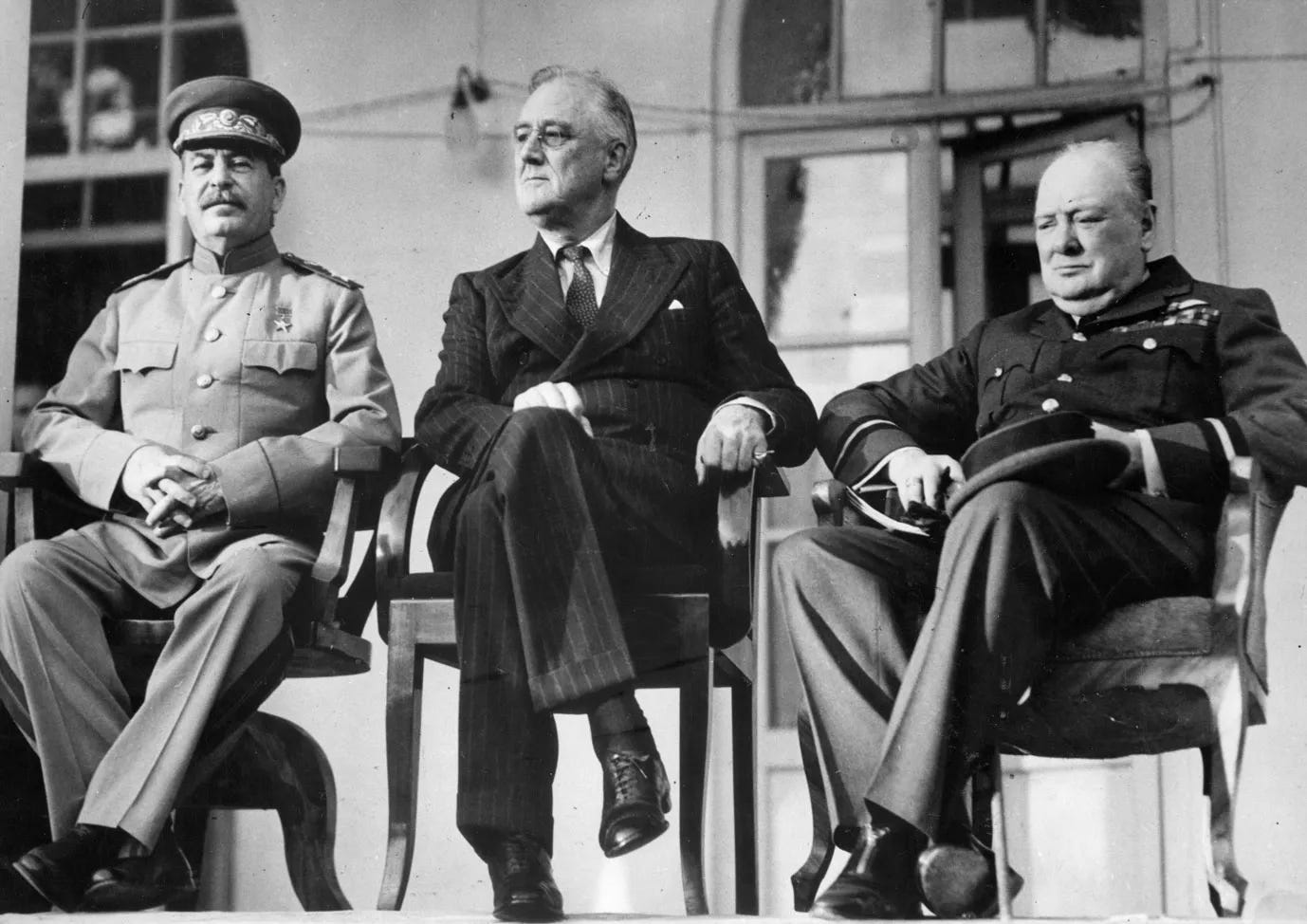Deep Dive: The Secret Bomber
It’s here! My first deep dive for The Preamble, and I can’t wait to share this with you.
Our deep dive begins as World War II is drawing to a close, with global leaders attempting to divide the world into spheres of influence. Which countries would be be ruled by the communist Soviet Union, and which would be overseen by the other Allies, including the United States, France, and Great Britain?
Joseph Stalin, the Soviet leader, was eager to make his mark on Europe and acquire territory to expand the Soviet Union.
President Roosevelt secretly knew that short of engaging in another war, there was little the other Great Powers could do to stop Stalin from taking over much of Eastern Europe, forcing them behind the ever-tightening grip of what would become known as the Iron Curtain.
So the decision was made to split Germany into two regions – the area under control of the West became known as the Federal Republic of Germany, or West Germany, and the area known as the German Democratic Republic, or East Germany, would remain under the Soviets.
We’re all familiar with the Berlin Wall, with Ronald Reagan standing before it in 1987, urging Mikhail Gorbachev to, “Tear down this wall.”
But an important detail that many history books neglect to mention is that East Germany and West Germany were not bisected at Berlin. In fact, Berlin was about 100 miles from the agreed-upon border, squarely inside East Germany.
Berlin was the main population center of Germany, and the Western allies weren’t going to let the Soviets control all of it, so the city of Berlin was also divided up into Eastern and Western spheres of influence.
The USSR became increasingly distrustful of the remaining Allies. This wariness, coupled with a lust for territory and power, led the Soviets to form a blockade around West Berlin, not allowing goods to move in or out, hoping to eliminate Allied control. If the Allies couldn’t get supplies in, West Berliners would be forced to rely on the USSR. More power and territory for them.
This left the Allies with a few options:
1. Fight the Soviets with weapons.
2. Cede control of West Berlin to the USSR.
3. Find another way to get the people of West Berlin the supplies they needed.
In June of 1948, the Soviets cut off all remaining supply routes to West Berlin, including a major bridge, claiming it needed to be repaired. They stopped food deliveries, rail service, water access, and cut off electricity to areas under Allied control.
That’s when the US approached Great Britain with what they viewed as the only viable option: they had to bring supplies in by air. The two countries agreed to move forward with a humanitarian airlift, flying needed goods over the Soviet blockade.
Officials calculated exactly how much they were going to need to supply via airplanes to get the two million residents of West Berlin enough food, coal, medicine, and other necessities. They decided on a ration of 1,990 calories per day per resident.
This meant that daily, planes would need to bring in:
646 tons of flour and wheat
125 tons of cereal
64 tons of fat
109 tons of meat and fish
180 tons of dehydrated potatoes
11 tons of coffee
19 tons of powdered milk
5 tons of whole milk for children
3 tons of fresh yeast for baking
144 tons of dehydrated vegetables
38 tons of salt
10 tons of cheese
And for power, 3,475 tons of coal, diesel, and gasoline.
Each day. Every day.







